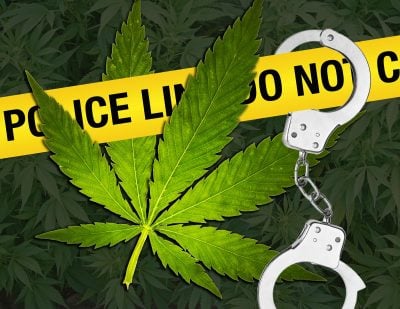Impact of Marijuana Legalization on Crime Rates
The impact of marijuana legalization on crime rates has been the subject of extensive research and debate. Overall, evidence suggests that marijuana legalization has positively impacted crime rates and the allocation of law enforcement resources in many states. While many states have observed lower crime rates, some have experienced mixed outcomes. These findings underscore the significant influence that legalization can have on crime rates. Here are some key takeaways:
Reduction in Crime Rates:
Studies have shown that states that legalized marijuana experienced a decrease in certain types of crime. The decline in marijuana-related arrests after legalization varies by state, but here are some examples:
- Colorado saw declines in both property and violent crimes after legalization.
- Washington and Oregon also reported declines in violent crime rates.
- Nevada, for instance, saw a slight increase in property crime but a decline in violent crime.
- Missouri arrests dropped from nearly 16,000 in 2018 to just over 1,000 in 2023 after legalization.
- Colorado saw a 10% decrease in violent crime rates and decreased property crimes from 2012 to 2019.
- Washington experienced a 12% decline in violent crime rates and a 9% decrease in property crime rates between 2012 and 2018.
- Oregon reported a 50% drop in drug-related offenses, including marijuana-related arrests.
- California saw a 56% decrease in marijuana-related arrests in the first year of legalization.

2. Redistribution of Police Resources
Legalization also typically leads to a significant drop in marijuana-related arrests for possession and use of marijuana. When law enforcement focuses less on pursuing marijuana-related offenses, police resources are free to address more serious crimes. These effects positively affect crime rates.
3. Shift in Criminal Activity:
Some argue that legalizing marijuana shifts criminal activity away from drug-related offenses. Instead of engaging in illegal drug trade, individuals can purchase marijuana legally. However, this shift may not necessarily reduce overall crime rates; it merely changes the nature of criminal activity.
4. Impact of Marijuana Legalization on Crime Rate and the Criminal Justice System:
Legalization has eased the burden on the criminal justice system by declining the number of marijuana-related cases.
- Reduction in Marijuana-Related Arrests: Legalization has led to a substantial decrease in marijuana-related arrests, freeing up law enforcement resources to focus on more serious crimes.
- Decreased Court Caseloads: With fewer arrests, courts have seen a reduction in marijuana-related cases, allowing them to handle other matters more efficiently.
- Racial Disparities: Legalization has helped reduce racial disparities in marijuana-related arrests, although disparities may still exist in other areas.
- Resource Allocation: Law enforcement agencies can allocate resources more effectively, focusing on violent crimes and other public safety concerns.
- Impact on Border States: States bordering those with legalized marijuana have not seen significant increases in marijuana-related arrests or trafficking offenses.
Overall, marijuana legalization has eased the burden on the criminal justice system, allowing for more efficient use of resources.

5. No Increase in Overall Crime:
Research indicates that marijuana legalization does not lead to an increase in overall crime rates. It may reduce crime in some cases.
6. Quality and Safety:
Legal marijuana is subject to quality control and safety regulations. These regulations reduce the risk of contamination and ensure consistent potency. The incidence of street marijuana cut with other drugs is a concerning issue, though it varies by region and specific circumstances. Buying from regulated dispensaries can mitigate these risks, ensuring the product's quality and safety.
Here are some key points:
- Fentanyl:
Reports of marijuana laced with fentanyl, a potent opioid, are fortunately isolated. Nonetheless, there are documented cases. There is no evidence supporting widespread fentanyl-laced marijuana.
- Heavy metals and fungi:
Occasional marijuana contaminates such as heavy metals, pesticides, and fungi occur due to cultivation practices. This contamination is more common in unregulated markets.
- Other Substances:
Marijuana is occasionally laced with other psychoactive substances, though this is less common compared to other illicit drugs.

7. Black Market Impact:
Legalization weakens the black market for marijuana by reducing the reliance on illegal sources. People who lawfully buy cannabis are less likely to turn to illicit sources. This shift can lead to several benefits. This type of impact of marijuana legalization on crime rates is very positive.
8. Marijuana Legalization Impact on Reduced Crime Rate:
Legalization can decrease the illegal drug trade and associated criminal activities. A weaker black market may reduce associated crimes like violence and theft related to drug trafficking.
9. Economic Benefits:
Legally sold marijuana generates tax revenue and creates jobs. Despite benefits to the economy, the black market has not disappeared entirely. Some people may still seek illegally sourced cannabis due to price differences or availability issues.
10. Potential Impact on Other Crimes:
Critics posit that marijuana use can lead to impaired judgment and increased risk-taking behavior. Effects on cognitive functions, decision-making, and attention may result in slower reaction times and disorientation. While research is inconclusive, some studies suggest a potential link between marijuana use and certain crimes (e.g., property crimes and driving under the influence, DWIs).
11. Context Matters:
The impact varies based on local policies, regulations, and cultural factors. States or countries with well-regulated systems may experience fewer adverse effects on crime rates.
In summary, the impact of marijuana legalization on crime rates is a multifaceted issue. While it can impact arrests for marijuana offenses and weaken the black market, other factors come into play. Context, regulation, and ongoing research are crucial in understanding this complex issue.


